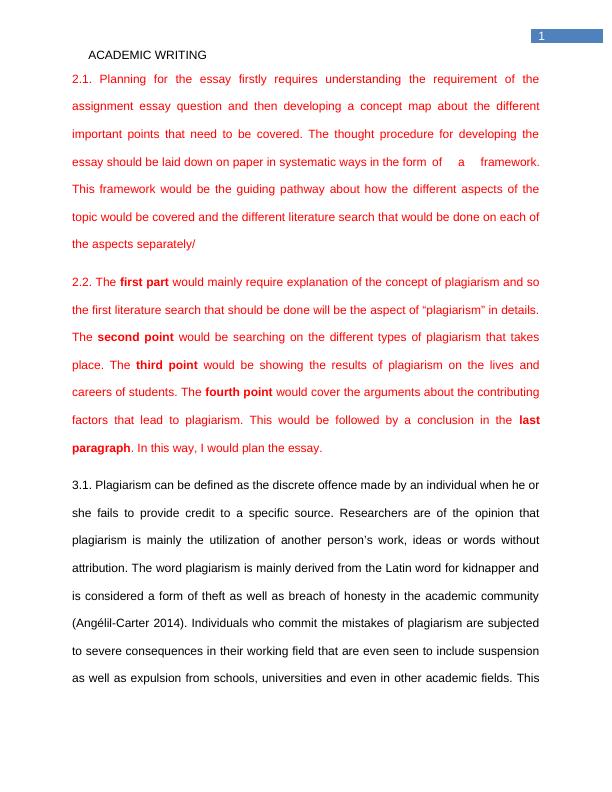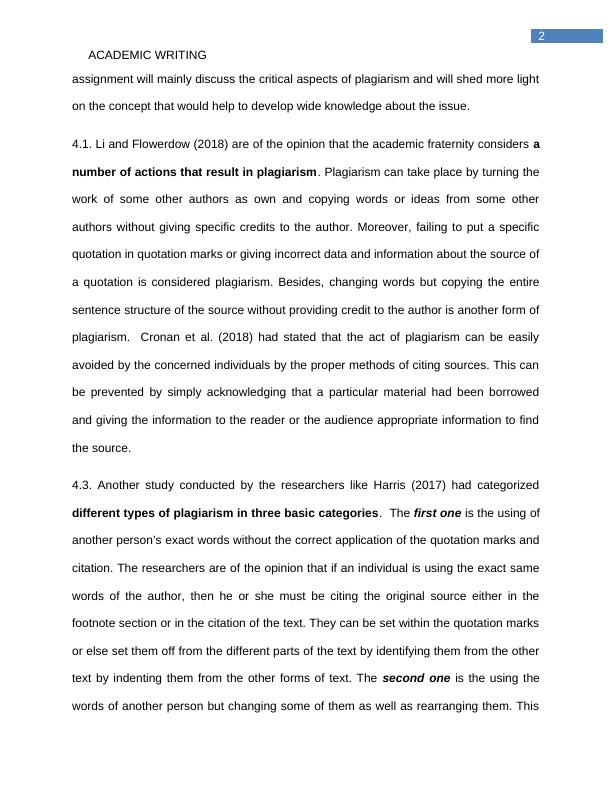Understanding Plagiarism: Consequences, Types, and Prevention
8 Pages2010 Words347 Views
Added on 2023-05-29
About This Document
This essay discusses the critical aspects of plagiarism, including its definition, types, consequences, and prevention. The author provides a framework for planning the essay and cites various studies to support the arguments. The essay emphasizes the importance of ethical writing and proper citation practices to avoid plagiarism.
Understanding Plagiarism: Consequences, Types, and Prevention
Added on 2023-05-29
ShareRelated Documents
End of preview
Want to access all the pages? Upload your documents or become a member.
Plagiarism and Referencing
|2
|1631
|412
Plagiarism in Academic Writing: Understanding the Different Types and Arguments
|7
|1458
|175
Academic Plagiarism: Definition, Types, and Ways to Avoid
|7
|1384
|1
Academic Essay Writing for Postgraduates
|4
|584
|24
Professional skills for Business and Finance (pdf)
|6
|1372
|73
Plagiarism in Business Context: Concept, Relevance, and Consequences
|6
|1296
|23



